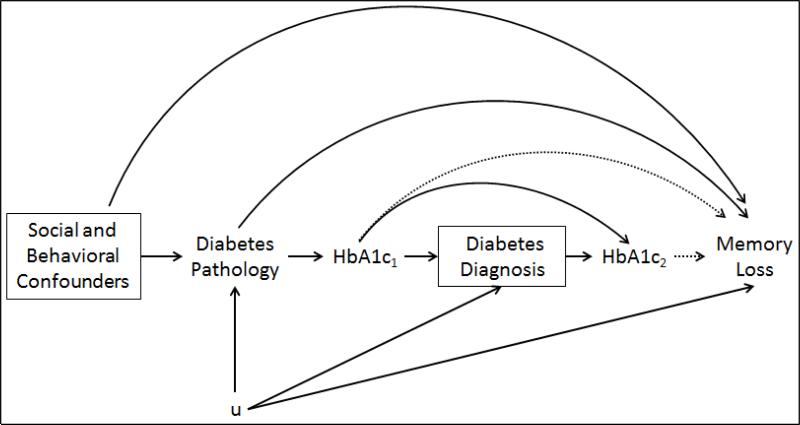Figure 1.
Directed Acyclic Graph (DAG) of the hypothesized relationship between diabetes, HbA1c, and cognitive decline.
We show HbA1c at two different time points (subscripts 1 and 2) to clarify that for some people we have a measure of HbA1c that precedes self-reported diabetes diagnosis and for others we have a measure that follows self-reported diabetes diagnosis. Diabetes pathology may influence cognitive decline either via chronic hyperglycemia (HbA1c) or via other mechanisms, such as hyperinsulinemia. Alternatively, it is possible that unmeasured confounders induce a spurious, non-causal association between diabetes and cognitive decline. The “u” represents possible variables that confound the relationship between diabetes diagnosis and decline, such as socioeconomic factors like late life income. If there were many unmeasured “u” variables, we would be concerned about collider stratification bias, but we believe that most of the variables in “u” are likely to be the same social and behavioral confounders already included in the study.

